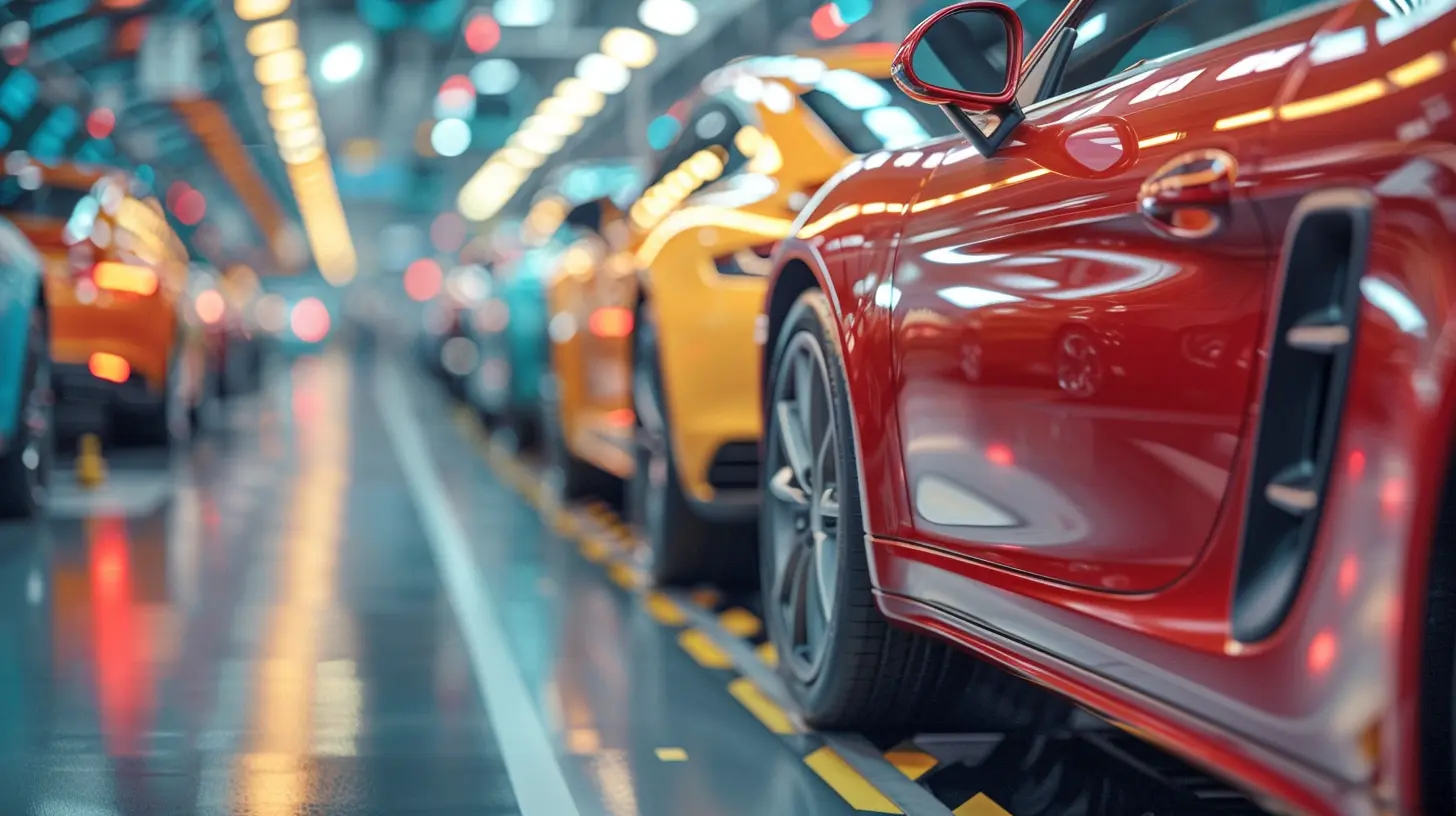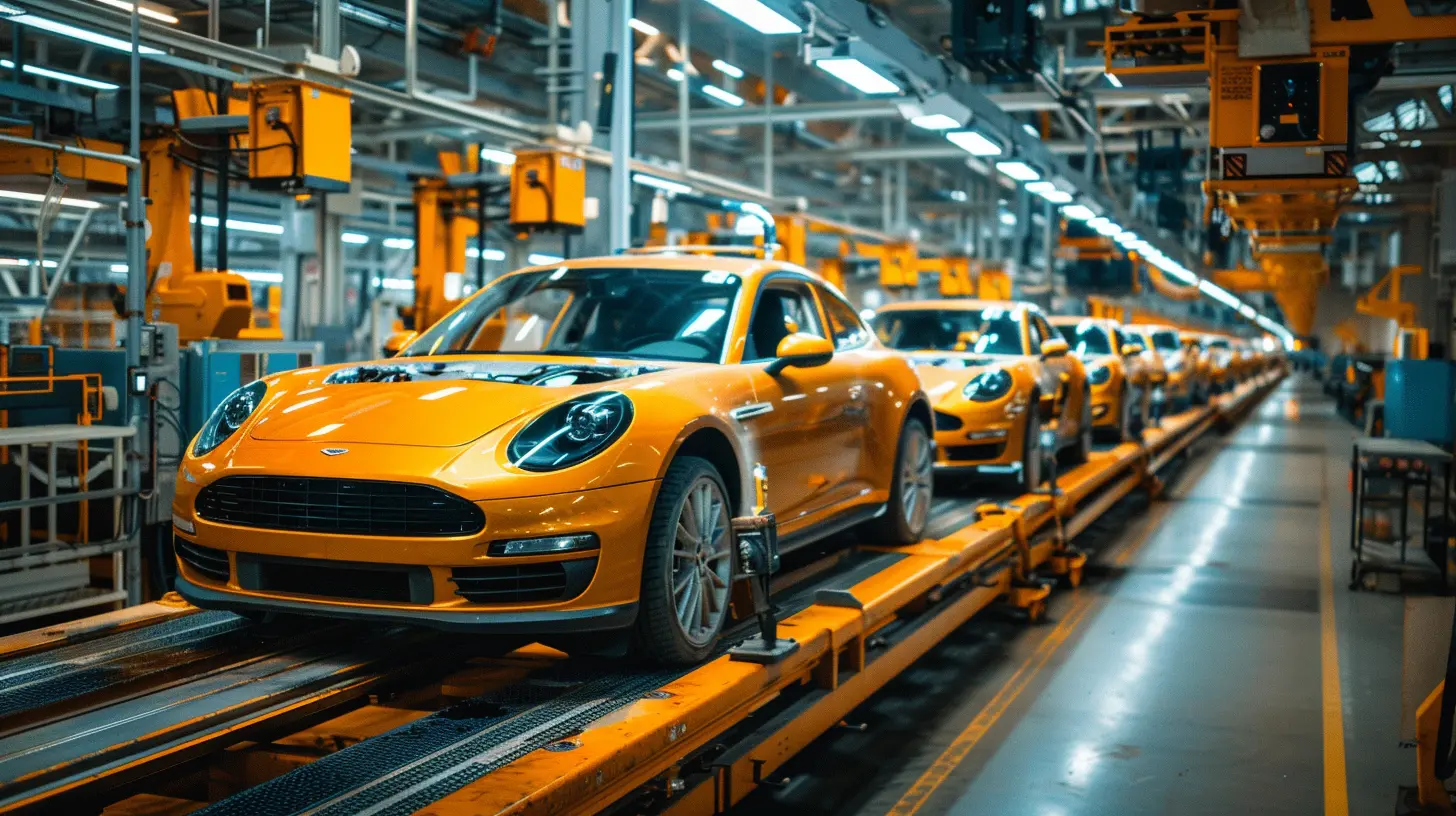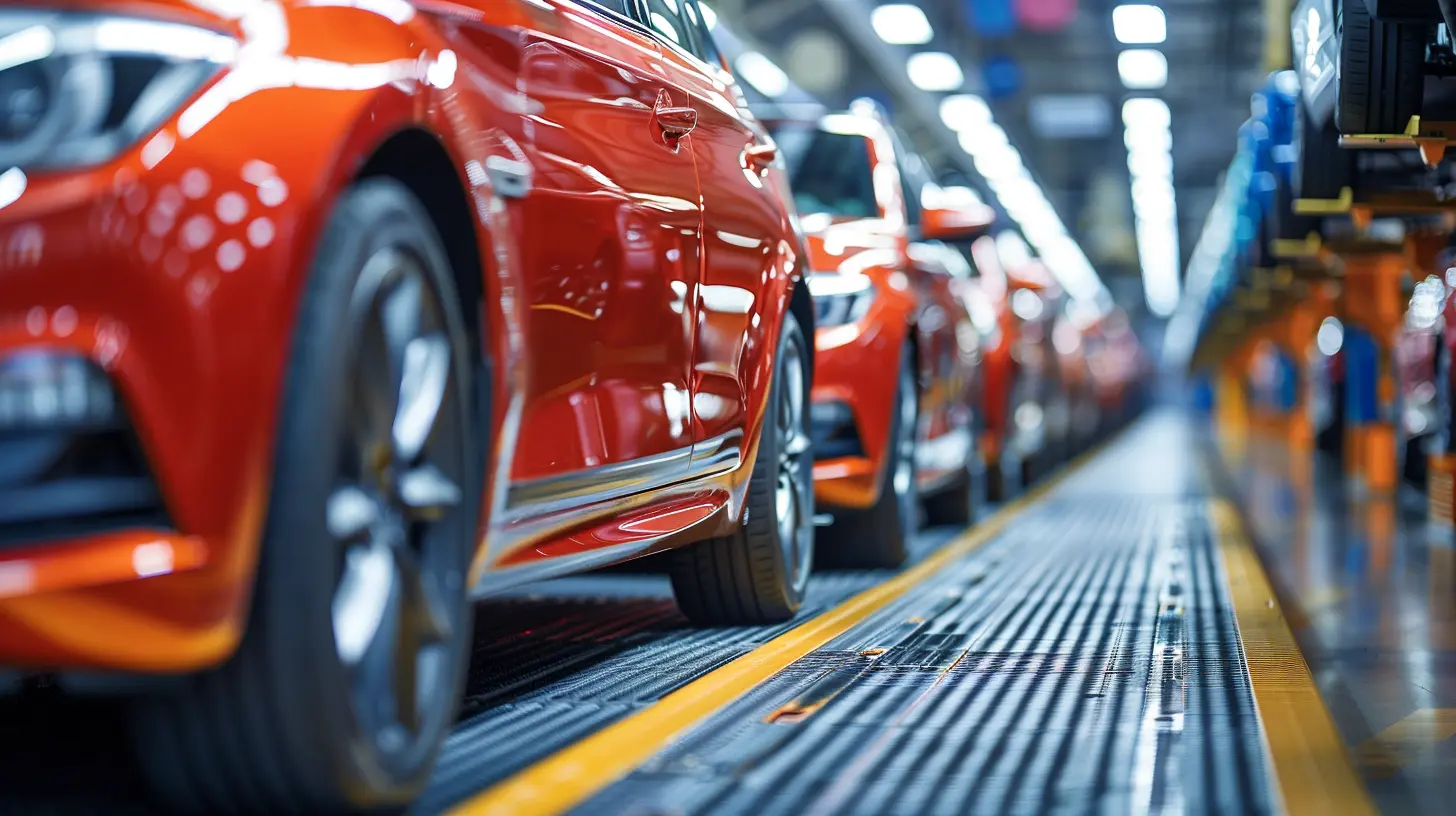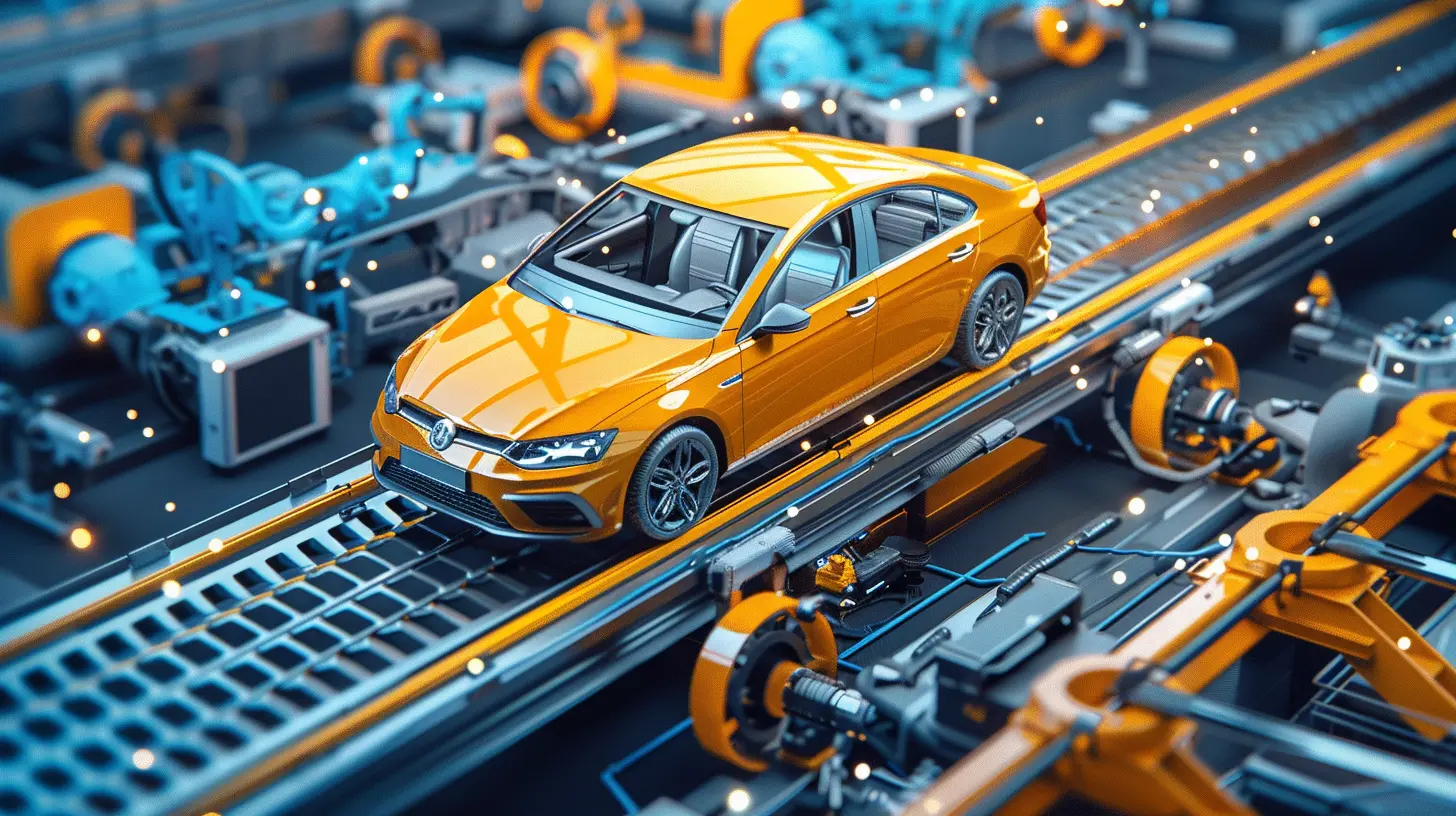How IoT is Transforming the Automotive Industry
29 July 2025
The world is moving fast—literally and figuratively. And guess what’s helping it shift gears? The Internet of Things (IoT). From smartphones to smart refrigerators, IoT has already made its way into our homes, offices, and fingertips. But here's the real kicker—IoT is revving up the automotive industry like never before.
Imagine a car that not only drives itself but also books its own service appointment, detects a pothole before you even feel the bump, and updates its software like your phone updates its apps. Wild, right? Well, that’s not science fiction anymore—this is the reality of modern mobility. So, buckle up as we take a deep dive into how IoT is transforming the automotive industry.
What Is IoT and Why Does It Matter in Cars?
Before we jump into the driver's seat, let’s quickly brush up on the basics. IoT stands for the Internet of Things. It refers to a network of interconnected devices that can collect, exchange, and act on data—without any human interference. Think of it like tiny digital brains plugged into everyday objects.Now, apply that to cars. Suddenly, your vehicle becomes more than just a machine—it becomes a tech-savvy partner. It communicates with other cars, traffic systems, manufacturers, and even your smartphone. Pretty futuristic, right?
A Smarter Ride: How IoT is Revolutionizing Vehicle Design
1. Enhanced Connectivity
We’re not just talking Bluetooth or Wi-Fi here. Modern cars are equipped with built-in IoT systems that allow Vehicle-to-Everything (V2X) communication. That means your car can talk to traffic lights, road sensors, other vehicles, and even pedestrians’ smartphones.This real-time information exchange helps prevent accidents, reduce traffic congestion, and make your daily drive smoother than ever.
2. Predictive Maintenance
Remember the days when your car broke down in the middle of nowhere without warning? Those are becoming history. Thanks to IoT, vehicles today come equipped with sensors that monitor engine health, tire pressure, fluid levels, and more.These sensors send data to your smartphone or directly to the service center, alerting you before something goes wrong. It's like having a car whisperer under the hood, constantly telling you what needs attention.
The Rise of Connected Cars
We're living in the era of "connected everything." And cars? They're leading the charge. Let’s break down how they’re doing it.1. Telematics Systems
Telematics is the tech behind how vehicles send, receive, and store data. These systems are a backbone of IoT in automobiles. They track things like speed, location, fuel usage, and even driving behavior.For fleet operators, this means better logistics and reduced operational costs. For everyday drivers, it translates to increased safety and convenience.
2. Over-The-Air (OTA) Updates
Gone are the days you had to visit the dealership for every little software update. Just like your smartphone, cars today can get OTA updates. Whether it’s a bug fix, new feature, or a security patch—your vehicle stays up to date wirelessly.This keeps your car smarter, safer, and always in-the-know.
IoT and Autonomous Driving: A Match Made in Tech Heaven
Self-driving cars are the poster child of futuristic transport, and guess what powers their brain? Yep, IoT.1. Real-Time Data Processing
For a car to drive itself, it needs to understand its environment 24/7. IoT sensors constantly pull data from radar, lidar, cameras, GPS, and more. That data is analyzed in real-time to detect obstacles, read traffic signs, and make split-second decisions.Think of it as giving the car a sixth sense—or maybe even a seventh.
2. Human Intervention? Optional
With IoT, cars can achieve Level 3 and even Level 4 automation. That means they can drive themselves under certain conditions without human input. We’re not quite at Level 5 (fully autonomous everywhere), but we're getting shockingly close.Smart Cities Need Smart Cars
You can’t have a smart city without smart transportation. IoT bridges this gap beautifully.1. Traffic Management
Imagine a world where traffic lights adjust in real-time based on traffic flow. Or where your car recommends the fastest route—not just based on congestion, but also road conditions, air quality, and accidents.That’s what IoT-powered vehicles are already doing. They’re not just participating in smart cities—they’re helping build them.
2. Vehicle-to-Infrastructure Communication (V2I)
Cars now communicate with road infrastructure—like toll booths, parking meters, and charging stations. For electric vehicles, this can mean automated charging and billing. For commuters, it means quicker parking and less stress.Safety First: How IoT Enhances Vehicle Security
Let’s face it, safety is non-negotiable when you’re dealing with two tons of metal speeding down the highway.1. Accident Avoidance
With IoT, your car can detect a vehicle in your blind spot, warn you about a jaywalking pedestrian, or even apply brakes before you do. These systems significantly reduce human error, which is a leading cause of road accidents.2. Emergency Response
In the unfortunate event of a crash, IoT can alert emergency services automatically, providing them with your exact GPS location and vehicle data. That's life-saving information delivered in real-time.Personalized Driving Experience
Wouldn’t it be great if your car greeted you by name, set your favorite temperature, and queued up your go-to playlist? With IoT, this is happening.1. Driver Profiles
IoT-enabled vehicles can remember multiple driver profiles. From seat positions and mirrors to infotainment preferences—it’s all customized. Your commute just got a personal touch.2. Voice Assistants
"Hey car, take me to the nearest coffee shop." IoT integrates with AI-powered voice assistants like Alexa, Siri, or Google Assistant, making your car experience feel like talking to a helpful co-pilot.The Role of Big Data in Automotive IoT
All this data—where does it go, and what happens to it?1. Data Analytics
Every second, IoT-connected cars generate gigabytes of data. When analyzed, this data helps automakers improve vehicle performance, enhance design, and even predict consumer preferences.2. Monetization Opportunities
Some companies are already monetizing this data—offering drivers custom insurance plans based on driving behavior or pushing contextual ads to your dashboard. Like it or not, data is the new oil.Challenges Ahead (Because It's Not All Smooth Roads)
Even the coolest tech has its bumps.1. Privacy Concerns
All this tracking and data collection? Yeah, it raises eyebrows. Who owns the data? How secure is it? These are questions automakers and regulators are still figuring out.2. Cybersecurity Threats
The more connected a vehicle is, the more vulnerable it becomes to hacks. That’s why automotive cybersecurity is now a crucial part of car design. No one wants their car to be taken over remotely. That’s the stuff of nightmares.What's Next? The Future of IoT in Automotive
The journey has just begun.1. 5G and Edge Computing
With the rollout of 5G, data transmission between cars and everything else is about to get lightning-fast. Combine this with edge computing, and you get real-time decisions without relying entirely on the cloud.2. AI + IoT = Magic
When artificial intelligence teams up with IoT, we get even smarter cars. Think about features like mood detection, adaptive learning, and environment-based driving styles. The car of the future might know you better than your best friend.Final Thoughts
IoT is not just sprucing up vehicles—it’s completely reinventing the way we think about transportation. From self-healing software to autonomous navigation, from real-time diagnostics to hyper-personalized user experiences—IoT is the real MVP in the automotive revolution.And as the industry continues to innovate, one thing's for sure: the cars of tomorrow are already gearing up to change the way we live, drive, and connect.
So, next time you hop into your car, pause for a moment and think—how much of what it does is powered by invisible, untiring, intelligent sensors? Spoiler: a lot more than you realize.
all images in this post were generated using AI tools
Category:
Iot DevicesAuthor:

Gabriel Sullivan
Discussion
rate this article
1 comments
Chloe McQuade
Fascinating insights! It's incredible to see how IoT is reshaping the automotive landscape. I’m eager to explore the potential innovations on the horizon!
August 10, 2025 at 11:45 AM

Gabriel Sullivan
Thank you! I’m glad you found the insights intriguing. The future of IoT in automotive is indeed promising!

